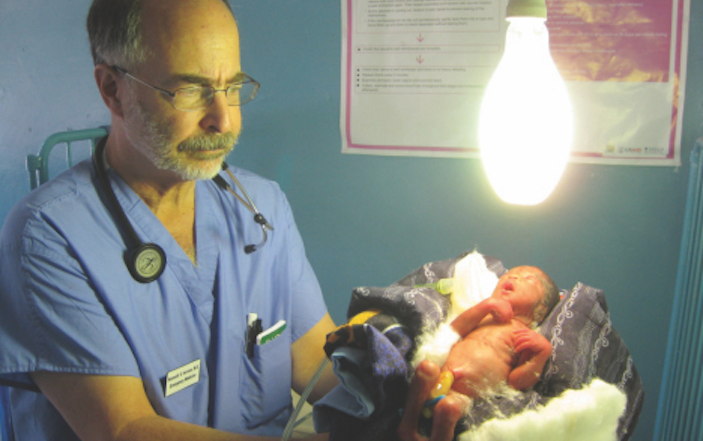A mark of excellence in emergency medicine is that clinicians can find a way to do what is necessary for their patients.
[Part of the My MacGyver Moment series]
When standard equipment is unavailable or established procedures will not accomplish the job, the emergency clinician must come up with a creative response—either recalling someone else’s solution or, MacGyver-style, thinking of their own. While these situations often arise in developing countries, disaster settings, and remote and wilderness environments, they can also occur in a superbly equipped medical facility experiencing local shortages or calamities.
Among the many improvisations I have adopted or adapted throughout my EM career, four stand out because they have subsequently served as models for others. The first, which arose during my EM residency, was to use bent paperclips as eyelid retractors, a technique I’d read about in a “throwaway” EM magazine. Considered bizarre in the mid-1970s, in many centers these retractors are now used by ophthalmologists when they are in the ED.
Three other improvisations also come to mind: one that could potentially save hundreds of lives, vertical patient evacuation; another that mimicked medical lore, dental extraction with electrician’s tools; and a third that benefited both the patients and the clinicians, hypnosis for fracture/dislocation reductions.
While they are unusual occurrences, a fire, smoke, toxic gas, or an electrical or water outage may require rapidly evacuating patients from multi-story hospitals. The public’s assumption is that such facilities have a plan; they don’t. In fact, most hospital guidelines simply advise calling the fire department, a group whose primary experience is centered on evacuating a few people using large teams. Our disaster team needed a better solution, so now we use a simple method to rapidly evacuate non-ambulatory patients down stairways using the sheets and mattresses from hospital beds. Not only does this require minimal exertion from three people per patient, but it also can be put into practice immediately in any facility. While a number of hospitals and disaster teams have trained using this vertical patient evacuation method, it has not been used for real—yet [1].
Cartoons and old westerns often show non-dentists extracting teeth with improvised equipment. Yet modern medical literature had not documented this type of improvisation. In the remote Arctic, and faced with two patients needing molar extractions, my solution used not only electrician’s tools in place of dental equipment (the electrician helped with the selection), but also an improvised dental chair, personal protective equipment, suction, and compounding medications (the teeth came out intact!) [2].
The third improvisation, hypnosis, was something that I briefly had been shown in medical school, but had dismissed as bogus. However, while accompanying our wilderness search and rescue team in the middle of the night, I encountered a young man with a shoulder dislocation. Typically, if our initial attempts to reduce the shoulder were ineffective, I would sedate the patient and reduce the dislocation. But, given that we would then have to extract him over dangerous terrain at night, I opted on the spot to attempt hypnosis. It worked beautifully, as it did for subsequent fracture and dislocation reductions in the wilderness and the ED. Since then, I have been able to teach and write about this technique for others to use [3-5].
Simply applying rote solutions won’t always work in emergency care. Rather, it takes a willingness to use all the skills, tools and knowledge at your disposal to adapt a solution to a clinical problem. That is what I call improvisation.
REFERENCES
- Iserson KV. Vertical hospital evacuations: a new method. S Med J. 2013;106(1):37-42.
- Iserson KV. Dental extractions using improvised equipment. J Wild Environ Med. 2013;24(4):384-389.
- Iserson KV. Reducing dislocations in a wilderness setting—use of hypnosis and intraarticular anesthesia. J Wild Med. 1991;2(1):22-26.
- Iserson KV. Hypnosis for pediatric fracture reduction. J Emerg Med. 1999;17(1):53-56.
- Iserson KV. An hypnotic suggestion: review of hypnosis for clinical emergency care. J Emerg Med. 2014;46;(4):588-596.




1 Comment
I have read that the paperclip eyelid retractor can be hazardous as paperclips may be covered in chrome plating that can flake off and contaminate the eye.